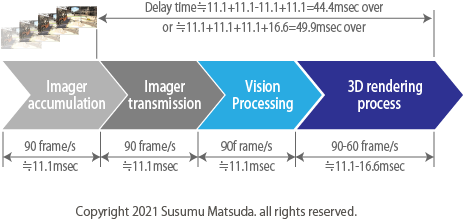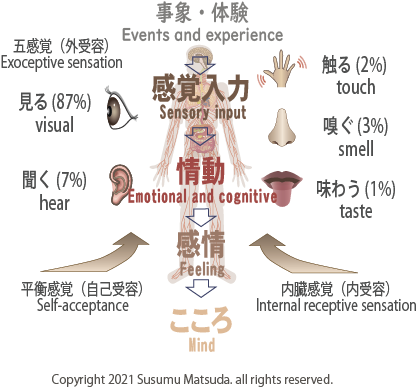The important point in virtual experience is to make people feel the difference from reality as much as possible. In particular, it is necessary to detect the posture of a person and then reproduce the reflection in the virtual space without delay. If this condition is not met, VR sickness and tiredness that occur when using VR continuously will occur. Delays are caused by various factors. Data capacity to handle, computer drawing ability (numerical value indicating how many drawings can be updated per second, called frame rate), image acquisition and position calculation ability of motion tracking camera, ability of system to process all of these systems It depends on. The update time = delay time processed by a typical image processing system is as follows.
3D drawing processing speed: 90 frames / sec (ideally 100 frames / sec or more)
Tracking processing speed: 60 frames / sec (ideally 100 frames / sec or more)
System processing speed = image storage + image transfer + position correction processing + 3D drawing processing
≒ 22.2msec + 11.1msec + 11.1-16.6msec = 44.4-19.9msec / cycle (delay time)
(* However, image storage and transfer differ depending on the imager performance of the image processing system.)

The delay time shown here is the system loss time. The smaller the delay, the better for humans, but it is the fastest processing time of the system excluding special high-speed cameras. VR sickness occurs if some conditions other than delay are not met. It is necessary to build the application in consideration of these conditions. The burden on the eyes changes depending on the expression by software, considering the effects of resolution, delay time, and optical light reproduction. Biological elucidation is needed to assess these effects.
